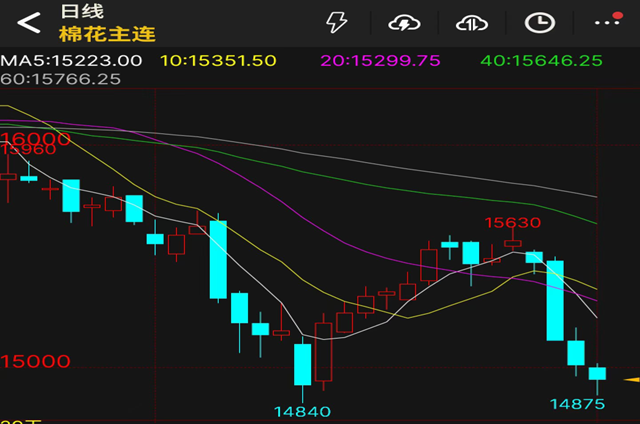Why ZCE cotton fall continuously?
Since mid-April, ZCE cotton futures market has shown a weak trend. The major cotton contract fell by 1,640yuan/mt, a 9.95% decrease, from 16,480yuan/mt to 14,840yuan/mt during mid-April and mid-May. Several factors contributed to this decline: 1. The Federal Reserve released hawkish signals in mid-April. 2. 2024/25 U.S. cotton production is expected to be good, confirmed by the May USDA supply and demand report. 3. Increasing ICE cotton delivery warehouse receipts and other factors led to a continuous decline in ICE cotton. 4. Chinese downstream demand started to weaken in mid-April. 5. The drop in international cotton prices widened the price difference between Chinese and international cotton, exerting pressure from imported cotton.

From mid-May to the end of May, ZCE cotton rebounded but then declined again in early June, with the main contract falling by 755yuan/mt from 15,630 to a low of 14,875 on June 4, a 4.8% decrease. This decline was primarily due to: 1. Poor macroeconomic sentiment in the overseas market on May 30, with many commodity falling significantly. ICE cotton was sharply lower. 2. Most varieties in the Chinese market fell from May 31 to June 4, with a negative overall macroeconomic sentiment and rapid declines in previously high-flying varieties such as manganese silicon and ferrosilicon. 3. Industry demand remained weak. Downstream spinners curtailed production and cut operating rate further, and product inventory continued to accumulate.
Both declines from mid-April to mid-May and in early June were triggered by ICE cotton, driven mainly by macroeconomic factors. The market faced abundant expectations of new cotton production in China and in the US, also the production from Brazil and Australian cotton. While Chinese downstream demand in early June was weaker compared to mid-April to mid-May. Spinners reduced production rates faster and faced greater inventory pressures, resulting in reduced cotton purchasing enthusiasm. Concerns about tight year-end inventories of 2023/24 Xinjiang cotton gradually diminished as downstream demand waned, basis of spot cotton declined periodically.
Looking ahead, ZCE cotton is seeking support after reaching a temporary low point, but in the medium to short term, with weak demand, ample new supply, and various macro uncertainties, it is likely to face continued upward pressure.
- Top keywords
- Cotton Price
- Cotton Futures Price
- Cotton Futures
- CZCE
- PTA Futures Price
- Chemical Fiber
- Polyester Prices
- Wool price
- PTA Futures
- Shengze Silk
- China
- Yarn Price
- price
- China Textile City
- Fibre Price
- Benzene Price
- Cotton
- Index
- Cotton Index
- PTA
- fabric price
- NYMEX
- Top 10
- textile industry
- Spot Cotton
- Cotton Yarn
- Polyester Price
- Futures
- PTA Price
- cotton yarn price

